
We love it when kids show a keen interest in veterinary medicine, so our Crookham Park team were thrilled to be joined by an eager-to-learn local Scouts and Cubs group this month.
They were very excited to go on a tour of our operating theatre to see all the equipment. They had the chance to meet nurse Sarah’s loveable one-eyed cat, Scrappy and receptionist Tina’s dog, Rosie, as well as listen to their heartbeats and learn how to care for them.
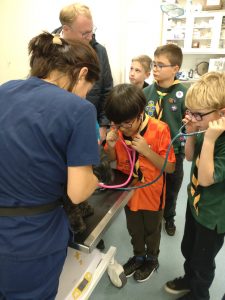
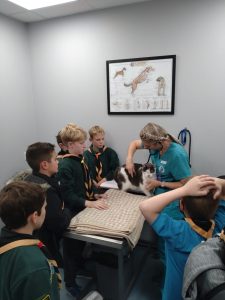
We taught them about bandaging, using a stuffed animal, and had great fun with plenty of games to get their brains working, including guessing the weight of the tortoise, matching different footprints to the right animal and guessing how many blood tubes in the pot – with prizes available for the best predictions!
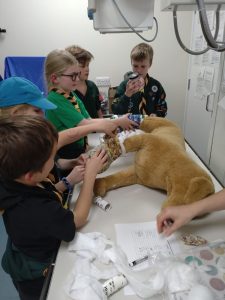

No one left empty handed, as all the Scouts and Cubs took a goodie bag home, with a tasty cupcake made by our talented vet Helen – as well as lots of new knowledge and skills!
We’d like to say a massive thank you to our amazing team: Abbie, Anna, Sarah C, Sarah H, Tina and Yulieth, for sharing their expertise and making the evening a great success and to the Scouts and Cubs – you will make great vets in the future!

Although firework displays can be enjoyable for us, the unexpected loud bangs and flashes of light can be very scary for our pets.
With events such as Diwali and Guy Fawkes Night just around the corner, we’ve put together some of the best ways to help prepare your pet for fireworks.
This can be done long before firework night. Simply transform a quiet area of your home into a safe place for your pet to retreat into and feel in control. Fill it with their favourite toys, so your pet associates it with positive experiences.
This area should bring them comfort when they are feeling anxious or scared, and should be left accessible to your pet even when you are not at home.
Cats may prefer to hide under furniture or in a quiet corner. It’s important not to try and coax them out, as this will add to their stress, just leave them feeling safe in a secure place.
Smaller animals will benefit from having lots of extra bedding so they can burrow down.
It’s estimated 45% of dogs in the UK show signs of fear when they hear fireworks, so it is best to keep dog walks to the daytime. When you know there are going to be fireworks, keep your pet inside to prevent them from getting spooked.
You should move your pet to their safe place before the fireworks begin, kitting it out with toys and anything you need so you can comfortably stay with them.
If you have small animals who normally live outside, you’ll need to plan ahead and get them used to coming indoors first. Partially cover their cages, pens and aviaries with blankets so that one area is well sound-proofed and your pet is still able to look out.
Your pet will observe how you react to the firework sounds, so it’s best to remain calm and reassuring. Playing with your pet, if they want to play, will be a good way to distract them.
One of the best ways to limit the effect of the fireworks is to mask the sounds, so try playing music or switching on the TV. Closing the windows and curtains will help to limit the sounds entering into your home, while blackout blinds are ideal to block out flashes of light.
If your pet struggles with loud noises and flashing lights during this time of year, you could try an anti-anxiety product to help them, including calming sprays, tablets, drops or diffusers.
There are a range of options available, but we typically recommend these to our clients:
All the above products are available in our clinics without an appointment.
Ideally, supplements need to be used a few weeks in advance to work their best, so remember introduce them early on in preparation.
Our lovely team of nurses are on hand to offer advice, so if you are concerned about your pet or have any questions, contact your local St Kitts practice to book an appointment.
St Kitts Veterinary Centre: 01252 844044
Basingstoke Veterinary Centre: 01256 844944
Crookham Park Veterinary Centre: 01252 913990
Firgrove Veterinary Centre: 01252 877799
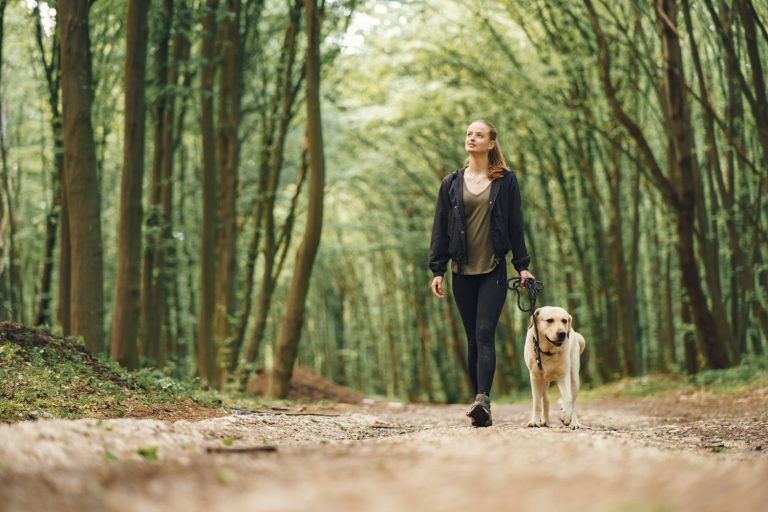
We’re so lucky that there are plenty of fantastic dog walking spots in Hampshire!
To help you make the most of the great outdoors, we’ve put together some of our favourite dog-friendly strolls in the county.
The walk at Dogmersfield Park takes you through woodland, across the parkland in the heart of the estate, which is home to the luxury 5 star hotel, ‘The Four Seasons’ and along the canal. It’s a lovely flat walk and the perfect rural escape, with some spectacular views. You never know, you may even be able to do a bit of celebrity spotting whilst you’re there!
This is a fantastic walk across the countryside and the perfect place for your dog to run around. Anstey Park alone has 32 acres to explore. It will take you along a picturesque river and through open farmland. You’ll get to see a number of different animals on route, including alpacas, donkeys, pigs and geese – which is an added bonus, especially if you have young children in tow.
Farley Mount Country Park offers a beautiful woodland with stunning views and is ideal for dog walking.
On your walk, you may find the famous monument, which can be seen for miles, that the country park is named after. The monument honours a race-winning horse named ‘Beware Chalk Pit’, who came back from defeat in 1734, a year after having fallen into a chalk pit whilst out fox hunting.
The New Forest is perfectly suited to your canine companions, thanks to it’s sprawling open landscape, winding tracks and wooded valleys. The doggy paradise includes over 140 miles of safe off-road tracks, 40 miles of coast to explore and plenty of new and interesting sights and smells for them to enjoy.
Some of our favourite trails include the Huff Duff, Hale Purlieu and Buckland Rings.
Ludshott Common is an area of natural beauty and one of the largest areas of heathland in East Hampshire, covering 705 acres. Full of rich colour from the heather and gorse, complete with livestock roaming.
Waggoners Wells, also part of the National Trust reserve, has beautiful ponds to walk around and you’ll discover a lovely wishing well that inspired renowned poet, Alfred Lord Tennyson.
Crabtree Plantation offers scenic views and features the impressive archway, ‘Bolton Arch’, which originally marked the entrance to the Hackwood estate. There are lots of routes to explore through woods and fields, perfect for taking your dog off the lead and practising recall.
You’ll have the chance to spot many butterflies along the way. If you are also travelling with children, there is a playground with a zip line, climbing frame and swings at the bottom of Crabtree.
Fleet Pond offers excellent views and is the largest freshwater lake in Hampshire. The nature reserve has 141 acres of heathland, woodland and marshland, and is great for spotting many species of birds, butterflies, dragonflies and wild flowers while on your walk.
The Vyne is a stunning 16th century Tudor house, run by the National Trust, that Henry VIII himself often visited. It’s set in picturesque gardens with sweeping lawns and a stunning lake. The expansive woodlands are an idyllic spot for seeing bluebells in the Spring. There’s also wetlands with a tranquil bird hide, a cafe, shop and playground.
We hope you enjoy getting out and exploring with your dog! If you become concerned about your pet, get in touch with your local St Kitts practice.
St Kitts Veterinary Centre: 01252 844044
Basingstoke Veterinary Centre: 01256 844944
Crookham Park Veterinary Centre: 01252 913990
Firgrove Veterinary Centre: 01252 877799
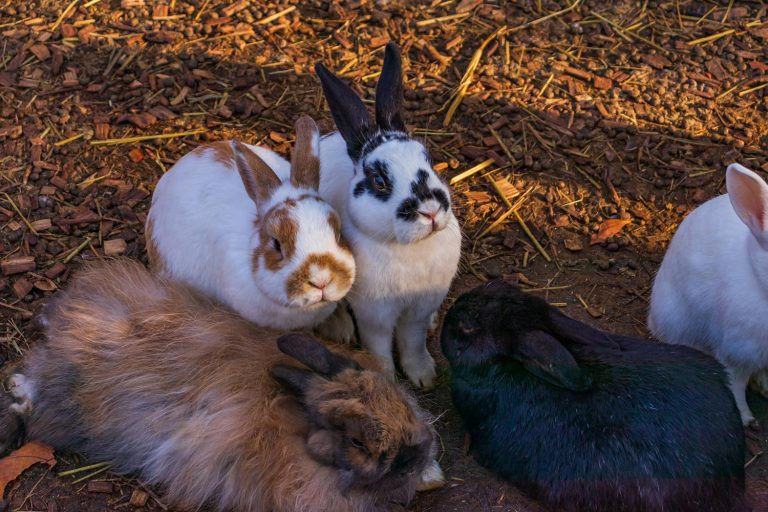
With their long ears, fluffy tails and adorable hopping, rabbits make wonderful pets and remain a firm favourite amongst families. However, they’re pretty complex creatures and there is so much to learn about them, so we’re sharing some facts about rabbits that you might not know below.
Getting your rabbit a friend is one of the best things you can do to make their life a happy and fulfilled one. They’re extremely sociable animals, often living in big groups in the wild, and thrive with the company they keep. The best combination is often a neutered male and neutered female.
Many well-looked after rabbits can live for 8-12 years, making them great long-term companions.
Rabbit teeth continue to grow throughout their lives, and should be worn down by chewing on grasses, wildflowers and vegetables so they don’t get too long.
Once their eyes do open, they have almost 360-degree vision thanks to the structure of their eyes and placement on the skull, meaning they can be very difficult to sneak up on.
Without the ability to sweat or pant, rabbits are at high risk of heatstroke. Wild rabbits regulate body heat by staying in burrows on warm days, only emerging when the temperature drops. To help keep your rabbits comfortable, make sure they always have places to stay cool.
Signs of heatstroke include (but aren’t limited to):
If you think your rabbit is experiencing heat stroke, contact your local vet right away.
Bugs Bunny has some explaining to do! Rabbits mainly eat hay and/or grass, along with small, measured amounts of leafy greens and pellets. Surprising to many people, root vegetables and fruit aren’t a natural part of their diet, as many are high in sugar and should only be fed in small amounts as occasional treats.
Rabbits are crepuscular, which simply means they’re most active at dawn and dusk. They love a good snooze during the day, which leads many people to wrongly assume they’re nocturnal, but if you check on your furry friend at sunset you’ll probably find that they’re in the mood to play!
If your rabbit is leaping or hopping and performing twists and kicks in mid-air, it’s known as ‘binkying’ and happens when they feel really happy or excited.
A rabbit’s ears serve two key functions. The first – and most obvious – is to help them monitor their environment and detect predators. Domestic breeds can rotate their ears 180 degrees, which means they’re able to pinpoint the exact location a sound is coming from. The second function is to help them regulate their temperature, using the ear’s large surface to prevent heat stroke and hypothermia.
Rabbits need access to plenty of fresh water at all times and will often drink more than a dog that is 5 times their size. It helps to keep everything moving in the gut, flush out excess calcium and keep their bodies healthy in general.
For more advice on your rabbit, or for any other concerns you may have, please get in touch with your local St Kitts practice.
St Kitts Veterinary Centre: 01252 844044
Basingstoke Veterinary Centre: 01256 844944
Crookham Park Veterinary Centre: 01252 913990
Firgrove Veterinary Centre: 01252 877799
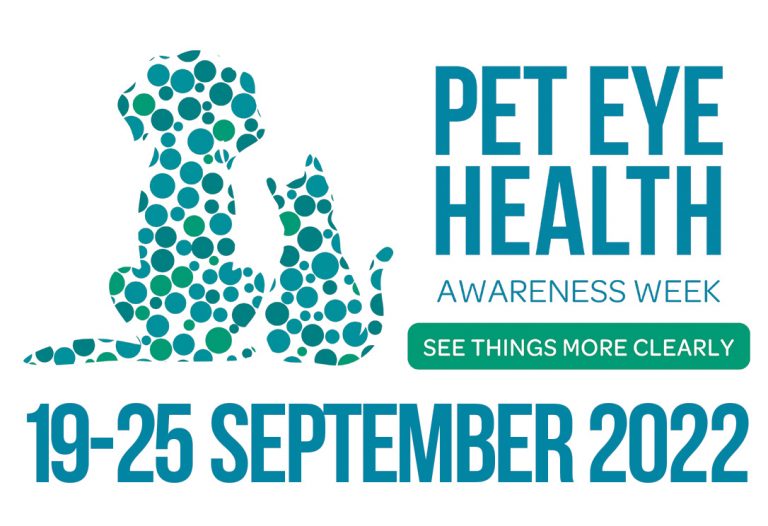
We’re proud to be taking part in TVM’s annual Pet Eye Health Awareness Week (19th – 25th September 2022), which this year, is focused on brachycephalic breeds and their increased risk of eye problems.
Just like us humans, your pet’s eyes are an extremely important part of their health and wellbeing. Eye problems can be painful and, if left untreated, may result in sight loss. They can also be a symptom of an underlying medical condition, which is why understanding the symptoms and booking an appointment to see your vet as early as possible is essential.
Brachycephalic ocular syndrome (BOS) is the term used to describe a combination of conditions that result in poor eye health in short-nosed dogs and cats. This includes dog breeds such as; Pugs, French Bulldogs, English Bulldogs, Boston Terriers, Lhasa Apsos, Shih Tzus, Cavalier King Charles Spaniels, Boxers; and Persian and Exotic/British Shorthair cats.
Their predisposition to eye problems is due to anatomical skull changes which often result in shallow eye sockets (meaning they have prominent, ‘bulging’ eyes) and eyelid abnormalities, among other things.
Any changes to your pet’s eyes could be a sign of a problem. To help, TVM has developed a handy guide with some specific symptoms to look out for.
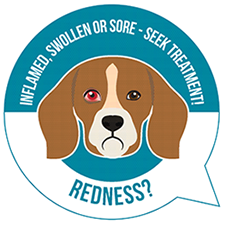
Your pet’s eyes are as sensitive as your own, so they can be just as susceptible to irritation, allergies, disease and injury. Redness is commonly due to inflammation and can be accompanied by discharge, irritation and swelling.

Do both of your pet’s eyes look the same? Are the face and head symmetrical when comparing left to right? Any sudden or gradual change in appearance between the eyes could indicate an issue, including differences in shape, size and colour.
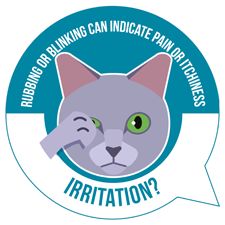
Did you know that the cornea has around 20-40 times more nerve endings than the root of your tooth? And we all know how painful tooth ache is!
Signs of eye irritation to look out for include:
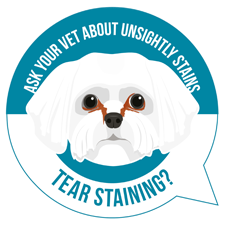
Tear stains are the reddish-brown marks that you may find on the fur around your pet’s eyes, especially if they have a pale coat. In most cases, the stains are cosmetic and can be removed with eye cleansers; however, it may also be a sign of an underlying problem and should be checked by your vet to be sure.
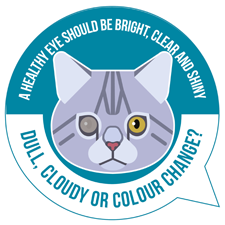
Your pet’s eyes should be bright, clear and shiny – if they suddenly look cloudy or opaque, this could be a sign of a problem that needs to be checked by your vet. Some common conditions that can cause cloudiness include cataracts and dry eye.
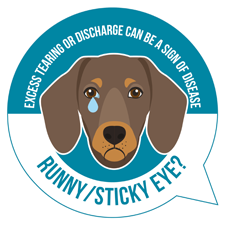
Eye discharge is a common problem in pets, ranging from watery to sticky/thick and in a variety of colours (clear, yellow, green, brown, red). While a little gunk can be normal, there are some more serious conditions that it may be a symptom of. As always, it’s best to consult your vet if you notice any discharge, just to make sure.
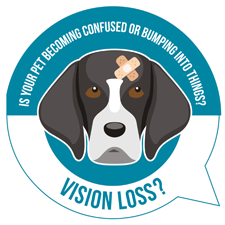
Loss of vision for your pet can be sudden or gradual, depending on the cause. It can be hard to spot as their other senses (such as smell and hearing) are much more heightened than ours and will often compensate for the loss of sight.
If you find your pet is regularly bumping into things, it could be a sign to get their eyes checked by a vet. They may also become more clingy with you as they look for comfort and guidance as their vision decreases.
If you notice any changes to your pet’s eyes, it’s always worth checking with your vet to be on the safe side.
If you have any concerns about your pet, please get in touch with your local St Kitts practice.
St Kitts Veterinary Centre: 01252 844044
Basingstoke Veterinary Centre: 01256 844944
Crookham Park Veterinary Centre: 01252 913990
Firgrove Veterinary Centre: 01252 877799

When Ruby the Shih Tzu was brought into our Hartley Wintney branch in March 2019, she was in labour but not producing any puppies.
Following assessment from our team, it was decided that she would need a caesarian section to save the pups. 3 puppies were born but sadly, only one survived. Milly, a Registered Veterinary Nurse at our Basingstoke branch, was on duty that day and nursed the pup to life. To honour Milly for her hard work, the owners kindly chose to name their new pup after her.
3 years on and we are delighted to see Milly the Shih Tzu doing great. She is happy and healthy and recently popped in to say hello to Milly the Nurse, where we got to snap some more up-to-date photos!





When welcoming a new puppy into your family and introducing them to an environment with unfamiliar scents and sounds, crate training can be a great way to help them settle.
There are a number of good reasons to crate train your puppy, including:
Crates come in all shapes and sizes; the main thing to take into account is that your puppy’s crate should be big enough that they can stand up and turn around easily in it, even as they grow. Make sure they have the room to lie down comfortably, with enough space for bedding and a water bowl.
There’s no one-size-fits-all approach to crate training – it’s all about what works for you and your pup. Starting them early on should help it all go smoothly, but it’s important to take it one step at a time.
Once you’ve set your puppy’s new crate up, make sure you have the door secured open so that it won’t shut on them. Adding some of their bedding, soft blankets or towels inside can make it more welcoming and comfortable.
Getting them used to their crate can take as little as a few minutes or as long as several days. They may be naturally curious and investigate the crate straight away – if they show interest, reward them with treats. If they don’t, or are even a bit wary of the crate, this is absolutely fine and will just mean you need to keep rewarding them positively when they choose to approach it. You can try putting treats or their favourite toy near to it and, as they gain confidence, move these to just inside the door.
Once your puppy has happily settled and is spending time in their crate without any worries, you can start gently shutting the door (but don’t lock it) for short periods of time to help them get used to it. Some owners choose to do this step while their puppy is eating meals inside the crate, as it helps to create a positive association. You could provide a long lasting chew or a Kong while they’re inside too.
It’s worth repeating this step for several days, making sure your puppy is relaxed throughout.
As your puppy gets used to the door being closed, you can gradually increase the length of time you do this for. You should be able to introduce a command word such as ‘crate’ or ‘bed’ to encourage them in, which they can be rewarded for.
Once they are comfortable with this, start locking the door while staying near to the crate and then build up to leaving the room for a few minutes if they are calm. When you return to the room, sit quietly for a few minutes, then let your puppy out of the crate and reward them for good behaviour.
As before, repeating this step over time will help build up to you leaving them in the crate alone when you are out of the house, as well as overnight.
When your puppy can stay comfortably in their crate for around 30 minutes with you out of sight the majority of the time, you can begin leaving them crated while you’re out of the house for short periods.
Start by putting them in the crate using your normal command and a treat. It can be useful to add a few safe toys to the crate too. Try not to make departures emotional and prolonged – instead, praise your puppy for getting in the crate, give them their treat and then leave quietly. When you return home, keep it low-key as to not over excite your puppy. Over time, you can build up how long you are able to leave the house for, up to a maximum of 4-5 hours.
Tip: While at home, continue to crate your puppy for short periods from time to time, as it’ll prevent them from associating crating with being left alone.
For the first few months after you bring your puppy home, sleep might come sparingly! They have tiny bladders, so it’s very likely that they will need to go to the toilet often. That’s why crate training your puppy at night is important.
To help get them in the crate, use your normal command and a treat. Initially, you may want to place it in your bedroom or nearby in a hallway overnight, so that you can hear your puppy whine in cases where they do need to go. Eventually, when they are happily sleeping through the night, you can begin to gradually move their crate to a new location if you prefer.
If you have any questions or are concerned about your pet and would like some advice, please get in touch with your local St Kitts practice.
St Kitts Veterinary Centre: 01252 844044
Basingstoke Veterinary Centre: 01256 844944
Crookham Park Veterinary Centre: 01252 913990
Firgrove Veterinary Centre: 01252 877799
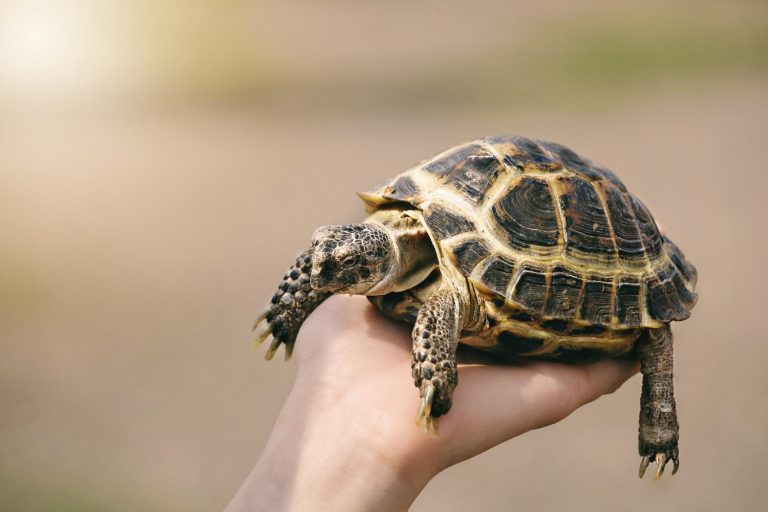
As tortoises are not native to the UK, they are used to very specific environmental needs that keep them healthy. Hibernation is a normal and important process for many species, which they undergo in both the wild and in captivity when temperatures start to drop as we approach the colder months.
If you have welcomed one of these docile and friendly reptiles into your family, check out our guide on how to hibernate a tortoise for everything you should know.
Not all species of tortoise hibernate, so make sure you do your research and find out if yours will need to. The following common species will hibernate:
Some hibernating species of tortoise should not be hibernated for a number of reasons, such as if they are underweight or have an illness.
You should start thinking about hibernation around mid-August, at which point it is recommended to get your tortoise booked in with your vet for a health check before making a final decision.
Your tortoise should only hibernate if they are in good physical health. Feeding them a healthy, balanced diet in the lead up over the summer months will help them to store sufficient fat reserves to prepare for their long sleep.
Before hibernating, your tortoise should not be fed for a period of time – the length of which depends on your tortoise’s size in comparison to the mature adult size for the species. Though your tortoise should not be fed during this time, it is important to keep them hydrated by bathing them daily in a shallow pool of water.
Keep your tortoise in a temperate of around 12/13 degrees Celsius after their last meal to allow enough time for the food to be digested. If undigested before hibernation, food can decay in their stomach and make them very unwell. The length of time it takes to digest their food will again depend on their size. Ask your vet for advice if you are unsure.
During the final preparation phase when their food has been digested, drop the temperature and gradually reduce their daylight hours.
Yes you can, although this should be separate from the fridge your food is stored in for hygiene reasons. Many experts will recommend the fridge method as it is easy to control the temperature your tortoise hibernates in.
To hibernate your tortoise, you will need:
While your tortoise is hibernating in the fridge, remember to open the door and check them daily to help circulate air.
The length of time your tortoise should be hibernated for will depend on their size. Small tortoises can be hibernated for around 8-10 weeks, while larger tortoises should be no longer than 16 weeks. Check with your vet before hibernating your tortoise.
Weigh your tortoise before you begin hibernation so that you can get an accurate starting weight to monitor weight loss from. While hibernating, your tortoise may lose up to 1% of their total weight per month safely. Weigh your tortoise every week and, if they start to lose more than this consistently, you should wake them early.
The best way to gradually wake your tortoise up is to place them in their box near a heat source, such as a basking or UV lamp, to help them acclimatise. After a few hours, they should begin to move around.
Once your tortoise is up and moving, encourage them to drink by placing them in a shallow dish of lukewarm water. Drinking is important at this stage, as they will be dehydrated and will need to flush out any toxins that have accumulated during hibernation.
Your tortoise can start to be offered food after they have hydrated to help them put back on the weight they have lost. If they are not eating within 1-2 weeks, it could be a sign of something wrong which should be checked by your vet.
Spring temperatures in the UK are not high enough for a tortoise to live outside, so keep them indoors for the remainder of the cooler months with adequate heating and lighting.
If you have any questions about how to hibernate a tortoise, please get in touch with your local St Kitts practice.
St Kitts Veterinary Centre: 01252 844044
Basingstoke Veterinary Centre: 01256 844944
Crookham Park Veterinary Centre: 01252 913990
Firgrove Veterinary Centre: 01252 877799
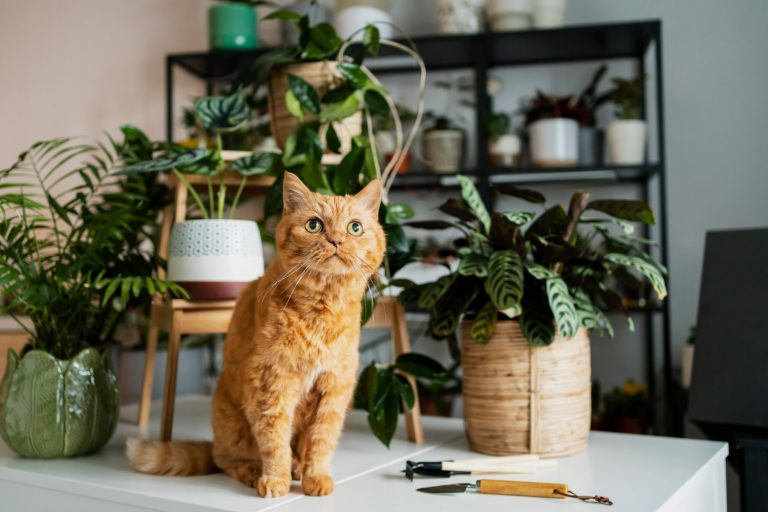
Cats are well known for going off and exploring, yet thankfully they tend to be fairly cautious around plants. There’s usually a greater risk of picking up pollen or sap from poisonous plants on their fur or paws, and ingesting it whilst grooming.
To help keep your furry feline friends safe, we’ve put together this useful guide about what plants are harmful to cats and what to do if you suspect yours has eaten something poisonous.
Although most symptoms of plant poisoning are mild, the severity will depend on the type of plant and the amount digested.
Here’s some key symptoms of plant poisoning in cats to watch out for:
It’s mainly due to their biological make-up and size, even a small dose of something poisonous can be fatal. Cats can sometimes struggle to process toxic substances and eliminate them from their body.
Also, cats lead an adventurous outdoors lifestyle; it’s hard to know what they’ve come into contact with, or when it happened, making it more difficult to react quickly.
Sadly, lilies can be deadly for cats. All parts of lilies are toxic, including its pollen, and it is the most commonly reported poison in cats and kittens.
Within minutes of ingesting the plant, your cat can become lethargic or start to vomit, it can also lead to kidney failure. Even small amounts can cause poisoning in cats.
Most of these plants will only cause mild symptoms, unless very large amounts are eaten. These plants are less toxic than lilies but can still harm your cat if ingested.
This list is not exhaustive, but covers a wide range of plants to stay clear of:
Be mindful when you are gardening to keep spring bulbs and other poisonous plants out of paw’s reach and, if you are pruning any poisonous plants, dispose of them straight away. The best way to keep your cat safe is to avoid planting poisonous plants at all.
It’s not just outdoor plants that can be a danger to cats, unfortunately cut flowers can have the same harmful effects. Picking a bouquet that is safe for cats will eliminate the risk of poisoning. As we know, daffodils and tulips can be harmful when eaten and lilies should always be avoided. Instead, it would be better to opt for pet friendly flowers like freesias, roses and snapdragons.
If you suspect your cat has come into contact with a poisonous plant, seek advice from your vet immediately. Getting emergency care will increase the likelihood of your pet making a full recovery.
If you have any concerns about your pet, please get in touch with your local St Kitts practice.
St Kitts Veterinary Centre: 01252 844044
Basingstoke Veterinary Centre: 01256 844944
Crookham Park Veterinary Centre: 01252 913990
Firgrove Veterinary Centre: 01252 877799
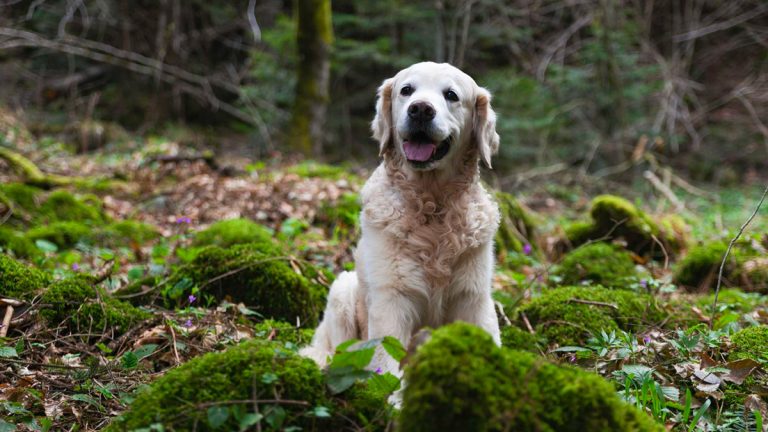
It’s no secret that dogs are curious and can get tempted to lick and chew plants and trees wherever they go. But some plants are particularly harmful to dogs and need to be avoided.
To help keep your dogs safe, we’ve put together a handy guide to harmful plants and what you should do if dog eats one of them.
It’s always worrying if your dog is showing signs of becoming unwell. In most cases, digesting plants will only cause mild symptoms, but some plants are dangerous, especially if your dog eats large quantities in a short space of time.
Here are some key symptoms of plant poisoning look out for:
If your dog is showing symptoms of plant poisoning, seek veterinary help as soon as possible.
Not all parts of plants are toxic, for some it’s only the bulbs or berries that will cause problems. But it’s better to keep your dog away from the whole plant to be safe.
The below list is not exhaustive, but covers a wide range of plants to stay clear of.
To help keep your dog safe at home, fence off the areas where you keep your plants and keep poisonous plants out of your dog’s reach. Or even better, remove toxic plants from your garden entirely and use non-toxic or artificial plants instead.
If you know there are certain dog walk routes where there are lots of poisonous plants, it’s best to avoid them and take another.
If your dog eats or chews a poisonous plant, you should call your vet immediately and take them in as soon as possible. You don’t need to wait for your dog to become unwell.
If you’re not sure what your dog has eaten, call your vet for advice.
It’s useful to pick a sample of what has been eaten so it can be identified later. Just make sure to package it carefully and wash your hands, as it could be toxic to humans too.
If you have any concerns about your pet, please get in touch with your local St Kitts practice.
St Kitts Veterinary Centre: 01252 844044
Basingstoke Veterinary Centre: 01256 844944
Crookham Park Veterinary Centre: 01252 913990
Firgrove Veterinary Centre: 01252 877799